
Secret of Mana, originally released in Japan as Seiken Densetsu 2, is a 1993 action role-playing game developed and published by Square for the Super Nintendo Entertainment System. It is the sequel to the 1991 game Seiken Densetsu, released in North America as Final Fantasy Adventure and in Europe as Mystic Quest, and it was the first Seiken Densetsu title to be marketed as part of the Mana series rather than the Final Fantasy series. Set in a high fantasy universe, the game follows three heroes as they attempt to prevent an empire from conquering the world with the power of an ancient flying fortress.
In the history of video games, the fourth generation of video game consoles, more commonly referred to as the 16-bit era, began on October 30, 1987, with the Japanese release of NEC Home Electronics' PC Engine. Though NEC released the first console of this era, sales were mostly dominated by the rivalry between Sega and Nintendo across most markets: the Sega Mega Drive and the Super Nintendo Entertainment System. Cartridge-based handheld consoles became prominent during this time, such as the Nintendo Game Boy (1989), Atari Lynx (1989), Sega Game Gear (1990) and TurboExpress (1990).

Krome Studios Melbourne, originally Beam Software, was an Australian video game development studio founded in 1980 by Alfred Milgrom and Naomi Besen and based in Melbourne, Australia. Initially formed to produce books and software to be published by Melbourne House, a company they had established in London in 1977, the studio operated independently from 1987 until 1999, when it was acquired by Infogrames, who changed the name to Infogrames Melbourne House Pty Ltd.. In 2006 the studio was sold to Krome Studios.
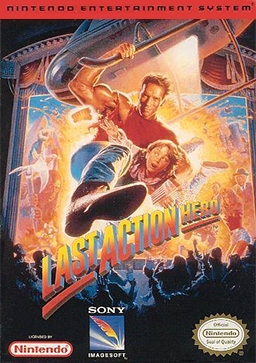
Last Action Hero is a series of action video games based on the 1993 film of the same name. Versions were released for the NES, Super NES, Sega Genesis, Game Boy, Game Gear, and MS-DOS. Versions were also planned for the Sega CD and Master System, but ultimately were not released.
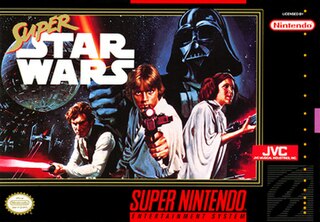
Super Star Wars is a 1992 action video game developed by LucasArts and Sculptured Software for the Super Nintendo Entertainment System. It is based on the 1977 film Star Wars. It was released by JVC Musical Industries in Japan and Nintendo in North America in 1992 and Europe in 1993. The game was followed by two sequels based on the subsequent Star Wars films, Super Star Wars: The Empire Strikes Back (1993) and Super Star Wars: Return of the Jedi (1994). The game was re-released in November 1996 as part of Nintendo's Player's Choice series. It was released on the Wii’s Virtual Console by LucasArts in 2009.
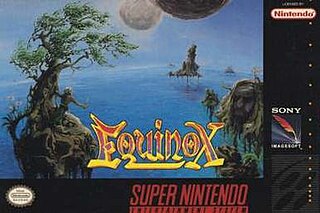
Equinox is an action adventure puzzle video game developed by Software Creations and published by Sony Imagesoft for the Super NES. A sequel to Solstice (1990) for the Nintendo Entertainment System, Equinox depicts Glendaal saving his father Shadax, the previous game's playable character, from the imprisonment of Sonia, Shadax's apprentice. The player acts as Glendaal, exploring 458 rooms in eight underground dungeons. The player collects 12 blue orb tokens while solving puzzles, killing enemies, collecting keys, navigating platforms and blocks, and battling bosses. It continues Solstice's isometric puzzle game style, with greater emphasis on action adventure and Mode 7 overworld map.

Tecmo Super NBA Basketball (テクモスーパーNBAバスケットボール) is a basketball video game developed by Sculptured Software for the Super NES. The game is the SNES equivalent of the original Tecmo NBA Basketball. It also came out a year later for the Sega Genesis.
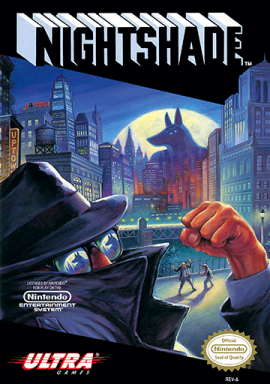
Nightshade, fully titled Nightshade Part 1: The Claws of Sutekh onscreen, is an action-adventure video game released in 1992 for the Nintendo Entertainment System. It was developed by Beam Software and published by Ultra Games. The game was meant to be the first part in a series, but no sequels were ever made; however, it served as the basis for Beam Software's Super NES video game adaptation of Shadowrun.

Shadowrun is a cyberpunk visual novel role-playing video game for the Sega Mega-CD adapted from the Japanese version of the pen and paper RPG Shadowrun by FASA. It was developed by Japanese company Compile and released on February 23, 1996 in Japan only as both the last Mega-CD game released in Japan and the last game released anywhere on the Mega-CD/Sega CD.

There have been several video games based on the 1991 film Hook. A side-scrolling platform game for the Nintendo Entertainment System (NES) and Game Boy was released in the United States in February 1992. Subsequent side-scrolling platform games were released for the Commodore 64 and the Super Nintendo Entertainment System (SNES), and an arcade beat ‘em up by Irem later in 1992, followed by versions for the Sega CD, Sega Genesis, and Sega's handheld Game Gear console in 1993.

American Gladiators is a video game developed by Incredible Technologies and released in 1991 by GameTek for the Nintendo Entertainment System. Ports were published in 1992 for Amiga, Genesis, Super NES, and MS-DOS compatible operating systems. It is based on the 1989 television game show American Gladiators.

Shadowrun is an action role-playing game for the Sega Genesis, released in 1994 in North America and Asia only. It was adapted from the cyberpunk role-playing game Shadowrun by FASA, and was developed by BlueSky Software. The game is the second video game adapted from Shadowrun, and has a more open ended style of gameplay than its 1993 Super NES counterpart, Shadowrun by Beam Software.

RoboCop 3 is a video game based on the 1993 film of the same name. Amiga, Atari ST and DOS versions were developed by Digital Image Design beginning in September 1990, and published by Ocean Software in December 1991. The Digital Image Design version includes multiple gameplay styles. During 1992 and 1993, other versions consisting of side-scrolling platform gameplay were released for the Commodore 64, ZX Spectrum, NES, Super NES, Game Gear, Master System, and Sega Genesis.
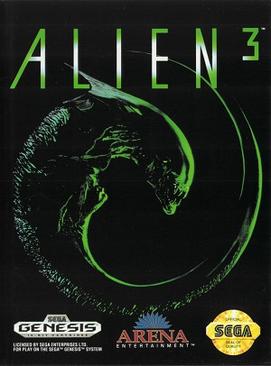
Alien 3 is a run and gun game based on the 1992 film of the same name. It was released for the Genesis and Amiga in 1992, then for the Commodore 64, Game Boy, Game Gear, Nintendo Entertainment System, Super Nintendo Entertainment System, and Master System.
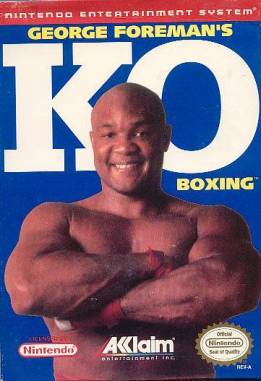
George Foreman's KO Boxing is a sports video game produced by Acclaim, featuring boxer George Foreman, released in 1992. Three years later, Acclaim released another game with Foreman: Foreman For Real.

WWF Super WrestleMania is a multiplatform wrestling video game based on the World Wrestling Federation (WWF), released in 1992 for the Super Nintendo Entertainment System and the Sega Genesis.
The 1990s was the third decade in the industry's history. It was a decade of marked innovation in video gaming. It was a decade of transition from sprite-based graphics to full-fledged 3D graphics and it gave rise to several genres of video games including, but not limited to, the first-person shooter, real-time strategy, survival horror, and MMO. Arcade games, although still very popular in the early 1990s, began to decline as home consoles became more common. The fourth and fifth generation of video game consoles went on sale, including the Sega Genesis, Super Nintendo, Sega Saturn, PlayStation, Nintendo 64, and Game Boy Color. Notable games released in the 1990s included Super Mario World, Sonic the Hedgehog, Street Fighter II, Mortal Kombat, Killer Instinct, Tekken,Doom, Wolfenstein 3D, Quake, Duke Nukem 3D, Final Fantasy VII, Unreal Tournament, Star Fox, Half-Life, Grand Theft Auto, Super Mario 64, Pokémon Red and Blue, NBA Jam,Daytona USA, GoldenEye 007, System Shock 2, Civilization,Ridge Racer, Sonic Adventure, Gran Turismo, Super Mario Kart, Pokémon Gold and Silver,Castlevania: Symphony of the Night, Super Metroid, Silent Hill, The Legend of Zelda: Ocarina of Time, Crash Bandicoot, Spyro The Dragon, Fallout, Metal Gear Solid, Diablo, Virtua Fighter, Tomb Raider,Sega Rally Championship, Wing Commander,Super Smash Bros, Secret of Mana,Thief: The Dark Project, Age of Empires, Nights into Dreams, Panzer Dragoon, Gunstar Heroes, EverQuest, Chrono Trigger, Battletoads, Worms, Myst, Micro Machines, Streets of Rage 2,Baldur's Gate,Donkey Kong Country, Wipeout, The Legend of Zelda: A Link to the Past,Lemmings, EarthBound, StarCraft, Banjo-Kazooie, PaRappa the Rapper, Resident Evil, Tony Hawk's Pro Skater, Soulcalibur, Command & Conquer, and Dance Dance Revolution.

Shadowrun Returns is a tactical role-playing game developed and published by Harebrained Schemes. It takes place in the science fantasy setting of the Shadowrun tabletop role-playing game. The game was crowd funded through Kickstarter and released for Microsoft Windows, OS X, Linux, iOS, and Android in 2013.

Shadowrun is a science fantasy tabletop role-playing game set in an alternate future in which cybernetics, magic and fantasy creatures co-exist. It combines genres of cyberpunk, urban fantasy, and crime, with occasional elements of conspiracy, horror, and detective fiction. From its inception in 1989, it has spawned a franchise that includes a series of novels, a collectible card game, two miniature-based tabletop wargames, and multiple video games.

Time Trax is a 1994 action-platform video game developed by Malibu Interactive and published by Malibu Games for the Super Nintendo Entertainment System. It is based on the television series of the same name, which aired from 1993 to 1994. The story follows police Captain Lambert as he tries to stop criminal fugitives from changing history and gaining control of the future, with aid from his supercomputer assistant. The player controls Lambert across eight levels, apprehending enemies using a stunner weapon capable of sending them back to the future. The player can also use martial arts to defeat enemies, or use a time ability to slow them down.



















